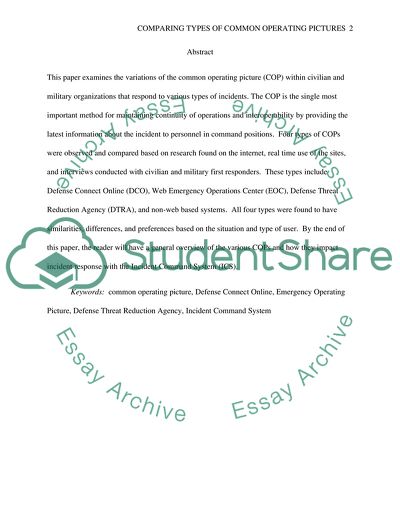Cite this document
(Comparing Types of the Common Operating Picture Research Paper Example | Topics and Well Written Essays - 2500 words, n.d.)
Comparing Types of the Common Operating Picture Research Paper Example | Topics and Well Written Essays - 2500 words. https://studentshare.org/military/1793158-civilian-and-military-incident-response-comparing-types-of-the-common-operating-picture
Comparing Types of the Common Operating Picture Research Paper Example | Topics and Well Written Essays - 2500 words. https://studentshare.org/military/1793158-civilian-and-military-incident-response-comparing-types-of-the-common-operating-picture
(Comparing Types of the Common Operating Picture Research Paper Example | Topics and Well Written Essays - 2500 Words)
Comparing Types of the Common Operating Picture Research Paper Example | Topics and Well Written Essays - 2500 Words. https://studentshare.org/military/1793158-civilian-and-military-incident-response-comparing-types-of-the-common-operating-picture.
Comparing Types of the Common Operating Picture Research Paper Example | Topics and Well Written Essays - 2500 Words. https://studentshare.org/military/1793158-civilian-and-military-incident-response-comparing-types-of-the-common-operating-picture.
“Comparing Types of the Common Operating Picture Research Paper Example | Topics and Well Written Essays - 2500 Words”. https://studentshare.org/military/1793158-civilian-and-military-incident-response-comparing-types-of-the-common-operating-picture.


